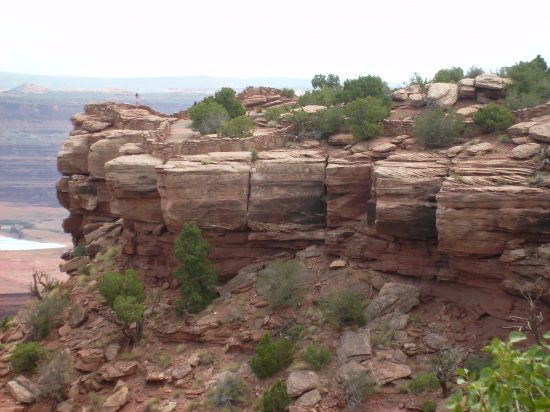Sputtering Canyons, Part 3
By Andrew Hall
In Part 1 of the Sputtering Canyons series, we discussed Arches National Monument and evidence that it was formed by a complex sputtering discharge process. That process involved a thermal-spiking, barrier discharge in a layer of wet sandstone.
In Part 2, we looked at how charge and charge depletion disperses through rock by the combined mechanisms of current drift and diffusion. We looked at evidence of diffusion patterns in the landscape and evidence of mechanical shear caused by sputtering discharge.
In Part 3, we’ll look at some secondary effects from electrical deposition and sputtering on the Colorado Plateau. These features involve processes besides sputtering discharge and lightning bolts, however. These features also involved the winds of the storm.
In the primordial, plasma typhoon that layered the dome of the Colorado Plateau, winds were mobilized by the Earth’s electric field. Ionic species of opposite charge were pushed in opposite directions. Positive and negative species segregated into streams of unipolar winds that circled the Earth in bands moving alternate directions.
The electric field gradient was from pole to pole, or at least where the poles are now, so the winds circled north to south and south to north. The effect was the same as the counter-rotating bands of wind on Jupiter. Where they met was the anodic hot spot where super-volcanoes belched ash and flame, and the bowels of the Earth spilled forth molten rock.
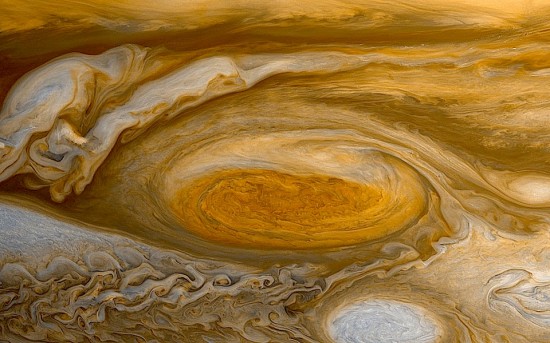
Jupiter’s Great Red Spot from the New Horizons spacecraft. Credit: NASA/JPL
Between the super-volcanic maw of Yellowstone and the strato-volcanic cones on the Mogollon Rim sits the Colorado Plateau, where the winds mixed in a plasma cyclone. The meeting of the unipolar winds was the Earth-sized equivalent of the Great Red Spot on Jupiter — a sustained and violent storm, charged with electricity and bent by magnetic fields — a storm beyond any Biblical description.
Like Jupiter, the winds screamed at several hundred miles per hour. Mach effects, like standing shock waves and supersonic shear, created extreme pressure, density, and temperature differentials. Vast updrafts and downdrafts developed, tornadoes spun-up fifty- to one-hundred miles across, and all of it carried electric current.
Where shock waves form, electric current flows. This is known phenomenon. The whole idea of an EMP weapon — an electromagnetic pulse that can knock out transformers and electronic systems, destroying the grid and communications — is based on this fact. Explode a nuclear bomb in the atmosphere and it will send out a shock wave. The shock wave carries the electromagnetic pulse that spikes a current suddenly and wipes out electronics and power grids.
There is no battery in the nuclear bomb that creates the EMP. The EMP forms naturally in the shock wave. There are several effects that cause this. First, the shock wave is a sharp discontinuity in density. Where the density is higher, of course, there is more matter, so a higher concentration of ambient ions are there, naturally raising charge density in the shock wave. The temperature is higher too, so that causes ionization in the shock wave. There is higher pressure, so particle collisions are more frequent, again ionizing the shock wave. And the bomb itself sends radiation with the shock wave.
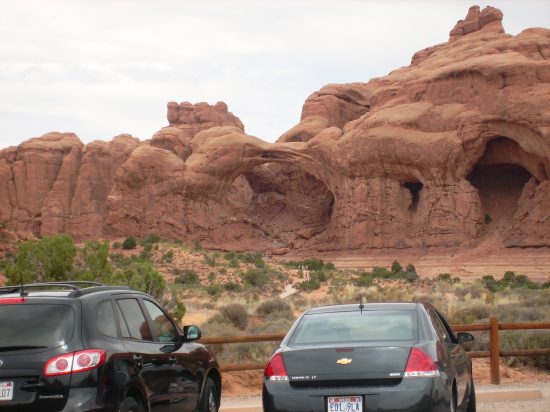
Arches National Monument, Utah, USA.
So all these effects add up to a large electric current in the shock wave, and it is self-amplifying. As ionization frees electrons to roam, they knock away more electrons in a runaway chain reaction. The process is related to the diffusion of charge discussed in Part 2, but in this case, the current diffusion is contained by the shock wave. The shock wave and electric pulse are coherent with each other.
Any place a supersonic wind hits an object or is forced to change vector, or where it shears against winds moving at a different velocity, a shock waveforms. A projection, like a mountain, would create a standing shock wave that created the wind and generated current. In a plasma atmosphere, that current would grow very large.
Another feature of shock waves is a reflection. Like any wave, a light wave, an ocean wave; when it hits something, some of its energy echoes. When it does, it reflects in harmonic relationship to the wave that made it. Shock waves can reflect off each other, or align with each other and vibrate in harmonic resonance.
Every lightning bolt, every belch from a volcanic vent, sent new shock waves to reverberate through the air and echo from whatever they hit. Every sheet of current in them altered the electric field around it, and the atmosphere vibrated with charged waves, stiffened and resonating with feedback from the energy of the storm.
Some traveled at the speed of sound; while standing waves, reflected from stationary objects exposed to wind, stayed in place. They crossed, interfered and canceled each other. In the chaotic turbulence of the supersonic electric storm, shock waves literally patterned the atmosphere. Because the shock waves carry current, and magnetic fields result, the right-hand rule forces waves into a cross-flow pattern with 90-degree angles.
Consider how ocean waves can form a coherent pattern in a cross-current sea, as shown in this photo from Ile de Re lighthouse off the coast of France.

Ile de Re cross-current. Photo by Michel Griffon.
Shock waves formed a similar effect, only carrying electric current. As the layers of the dome built the Colorado Plateau, they scarred the land with these patterns.

Electro-sonic shock cuts deeply into monolithic layers.
In other cases, they are straight, evenly spaced, parallel fissures. Razor thin shock waves created the fractures in the cap and rim rock as the dome was deposited, while it was still hot and plastic. Thermal contraction during cooling and the tearing away of material during sputtering broke the rocks along the shock-induced fracture lines.
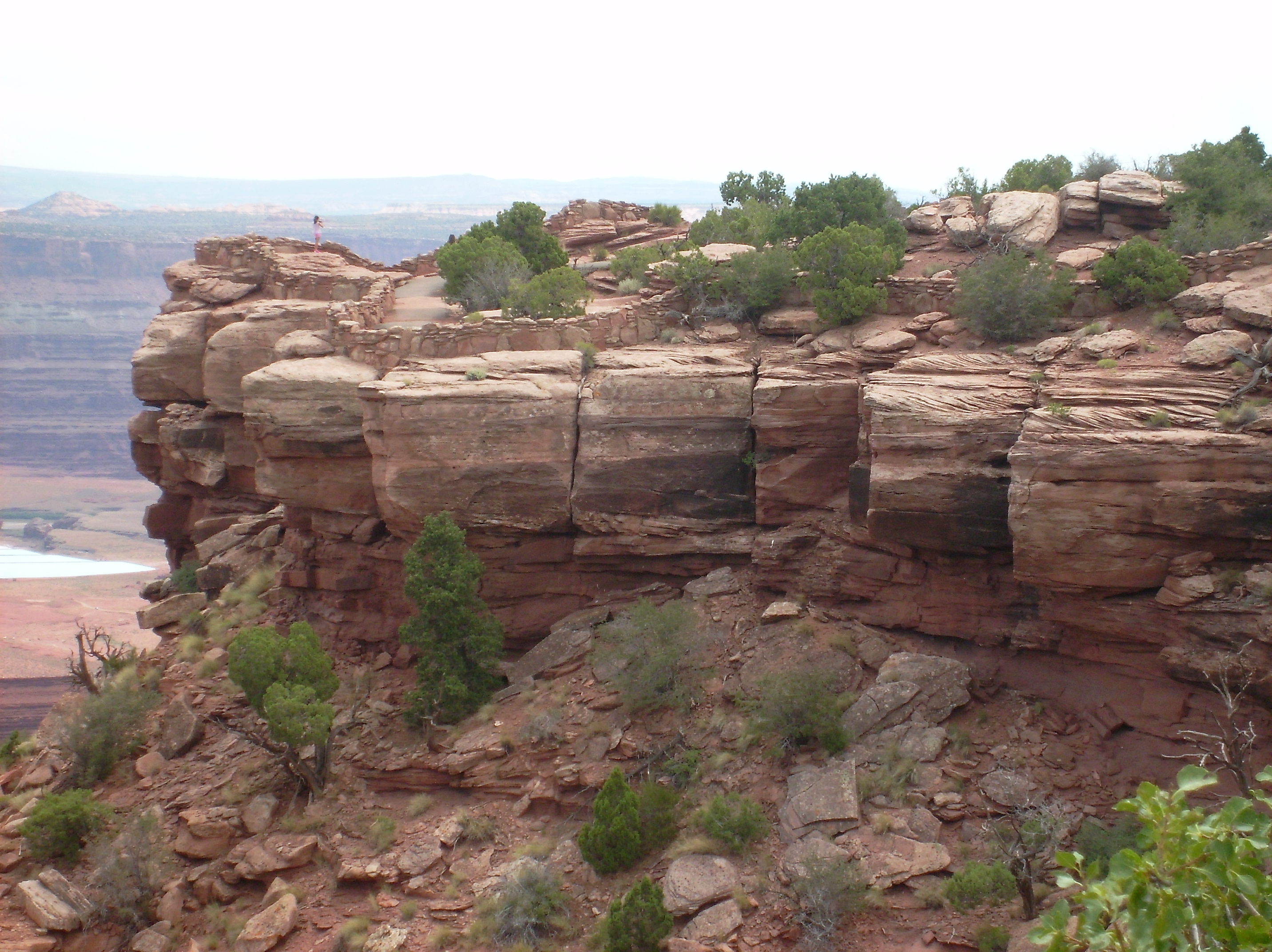
When nature uses a ruler — think electro-sonic shock.
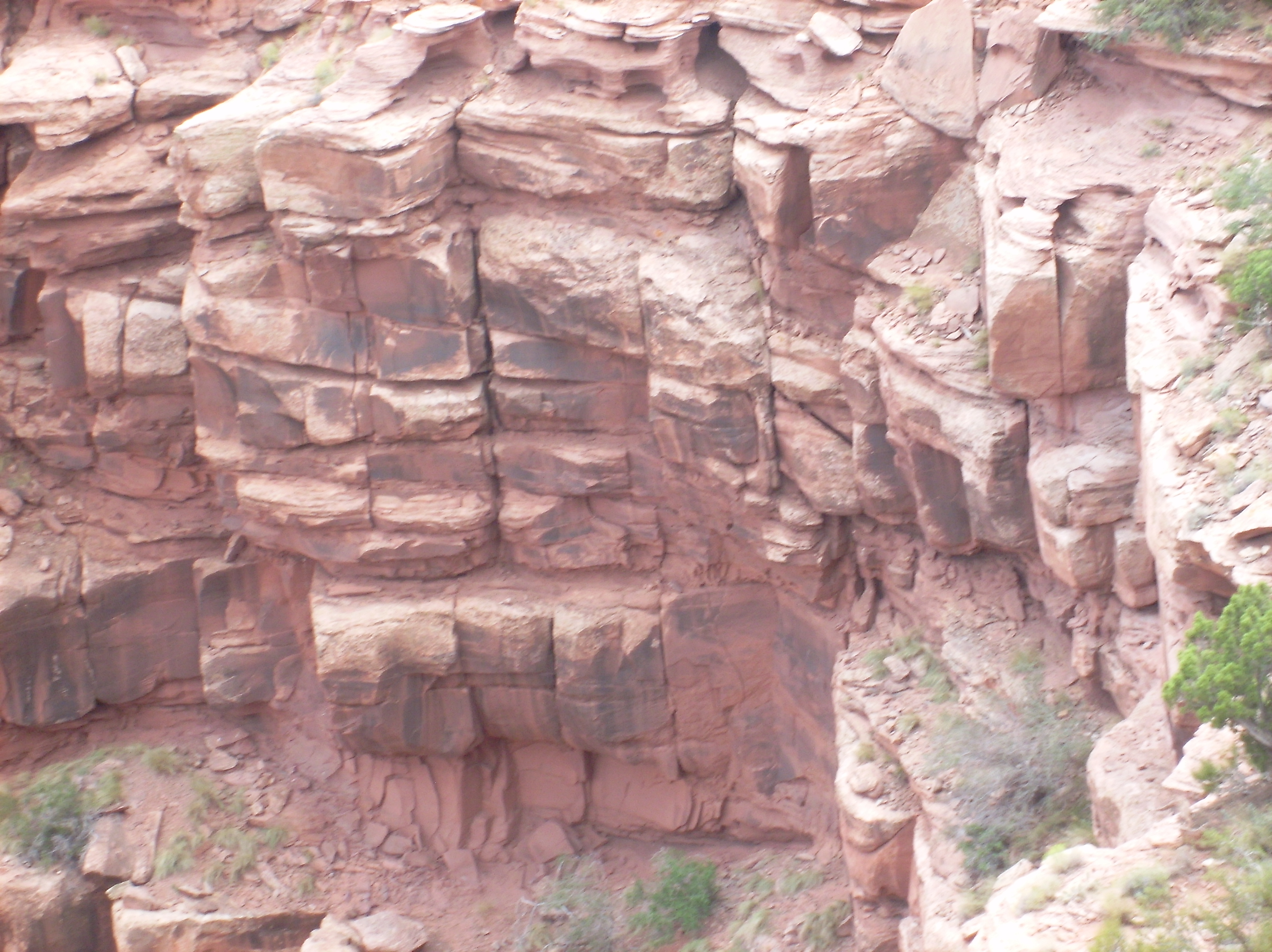
Shock patterns change between layers deposited by successive winds that can use discontinuity in fissures.
The same effect is seen in completely different geologic formations — the windblown buttresses on mountain flanks. These images are from Comb Ridge, which is the southern rim of the Monument Valley dome, and San Rafael Reef at the southern rim of the San Rafael Swell. Both are dunes of triangular buttresses formed by the supersonic winds sucked into the storm that formed the domes. The shock waves from the supersonic winds that formed the dunes impressed themselves into the rock.

Comb Ridge checkerboard shock patterns.
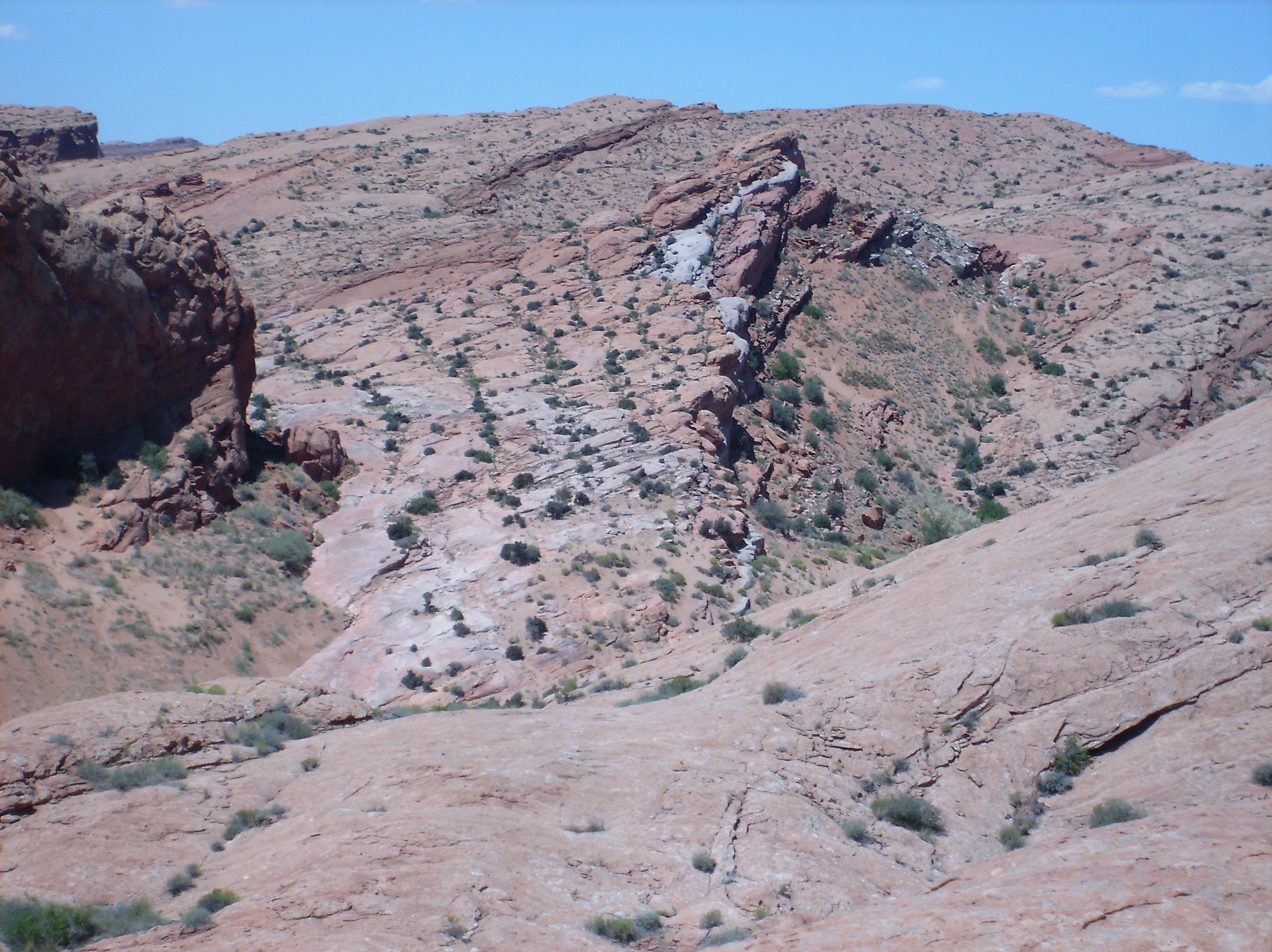
Triangular falt-iron buttress in Comb Ridge with checkerboard shock pattern.

Flat-iron buttresses San Rafael Swell, Utah. Note shock patterns on two successive layers, upper left, and foreground.
The shock wave currents shatter into harmonic reflections in ever smaller patterns. In formations where extremely high energy was available, such as the hardened plates of flat iron buttresses on the San Rafael Reef, the shock waves continued to shatter, reflect and reverberate down to the smallest scale.
This rock photographed from a flat iron buttress in Utah by Robert Hawthorne, during a field trip following the 2017 conference, shows parallel cuts in rock only a half inch apart.
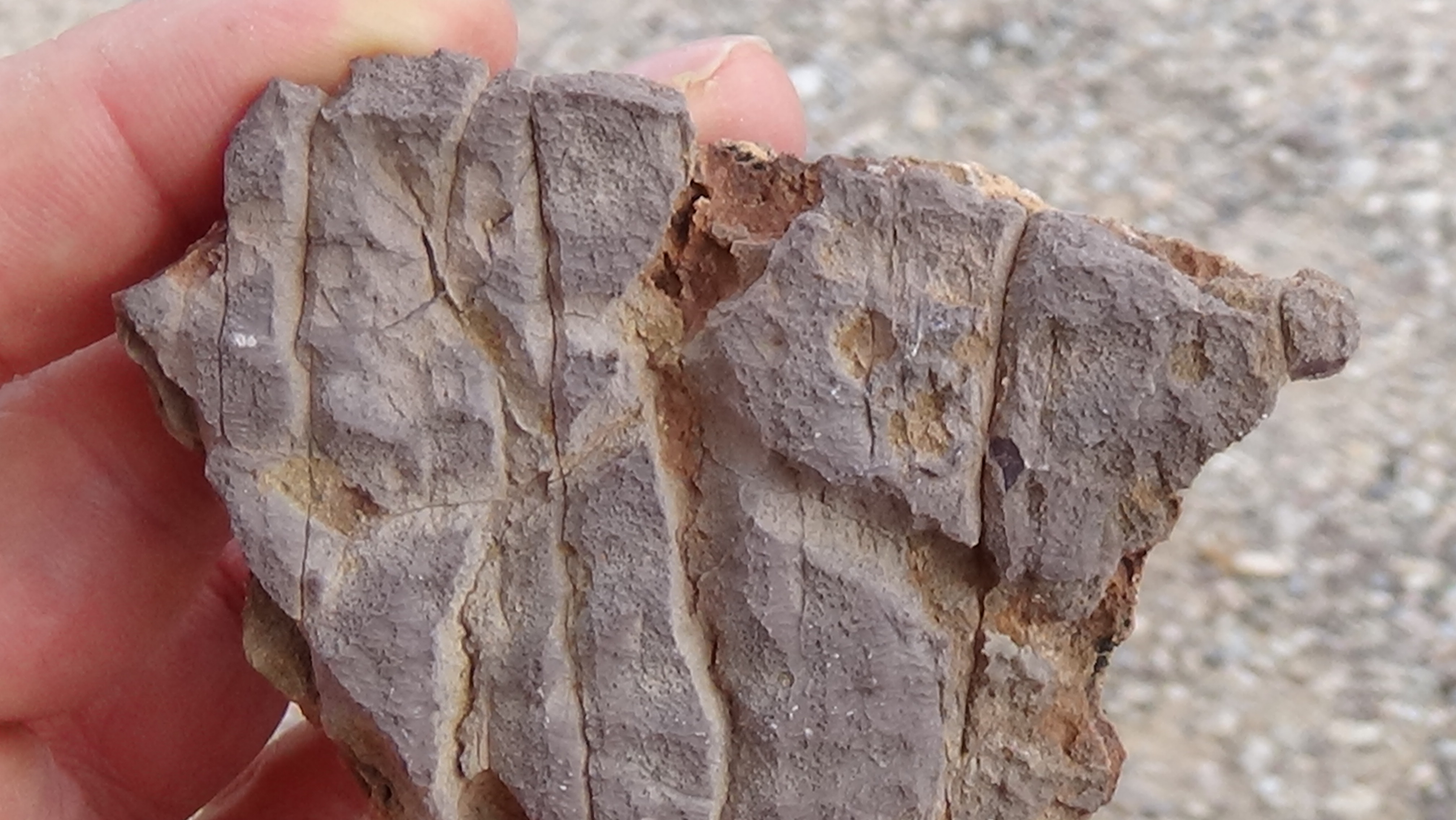
The rock below was photographed by the author from another buttress in Utah during the 2016 field trip. It shows the squiggled fractures of a dissipating, shock-induced current along the back edge of the buttress. These rilles only penetrate a fraction of an inch into the rock, and really defy any other explanation, unless rock eating worms cut these paths.
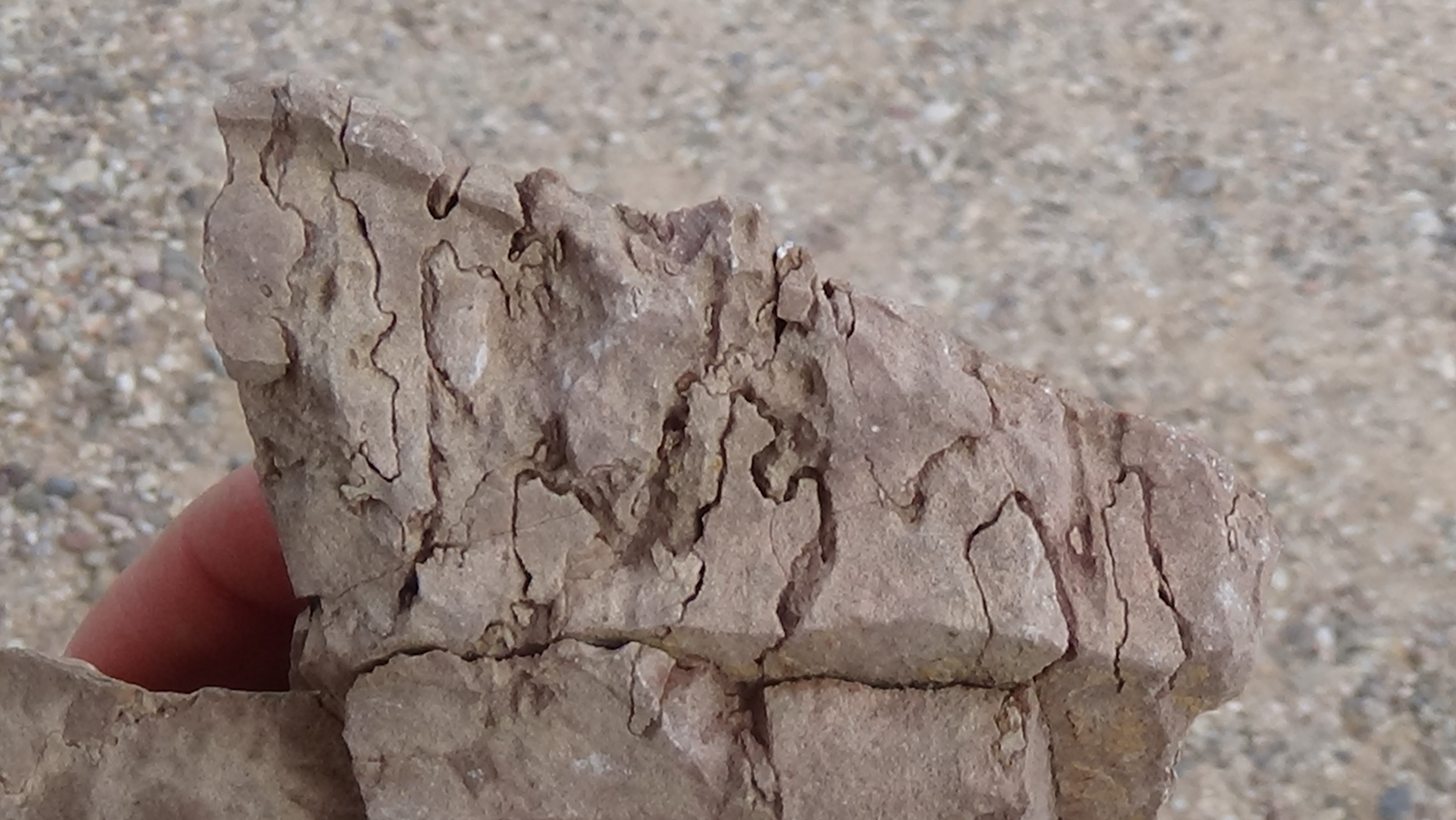
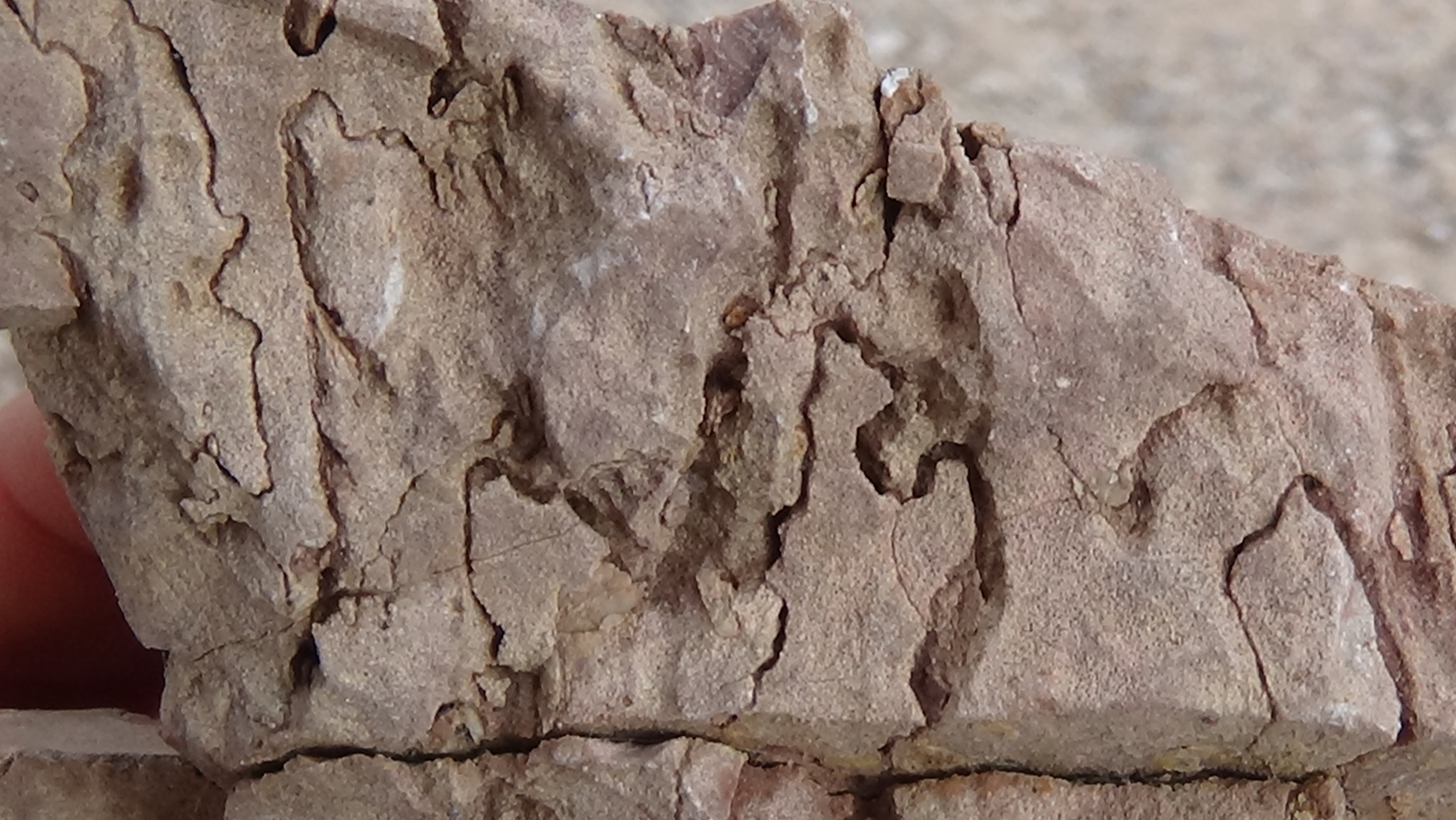 Another feature related to shock induced currents in linear, parallel formations, is something we’ll call, inverse dikes. A dike is a vertical wall of rock. It can be free standing, or it can be embedded in a parent rock, like a quartz vein in granite. Quartz veins are caused by very high-current shock waves (which immediately raises the question, how does gold get in the veins? But that is a question for a future article.)
Another feature related to shock induced currents in linear, parallel formations, is something we’ll call, inverse dikes. A dike is a vertical wall of rock. It can be free standing, or it can be embedded in a parent rock, like a quartz vein in granite. Quartz veins are caused by very high-current shock waves (which immediately raises the question, how does gold get in the veins? But that is a question for a future article.)
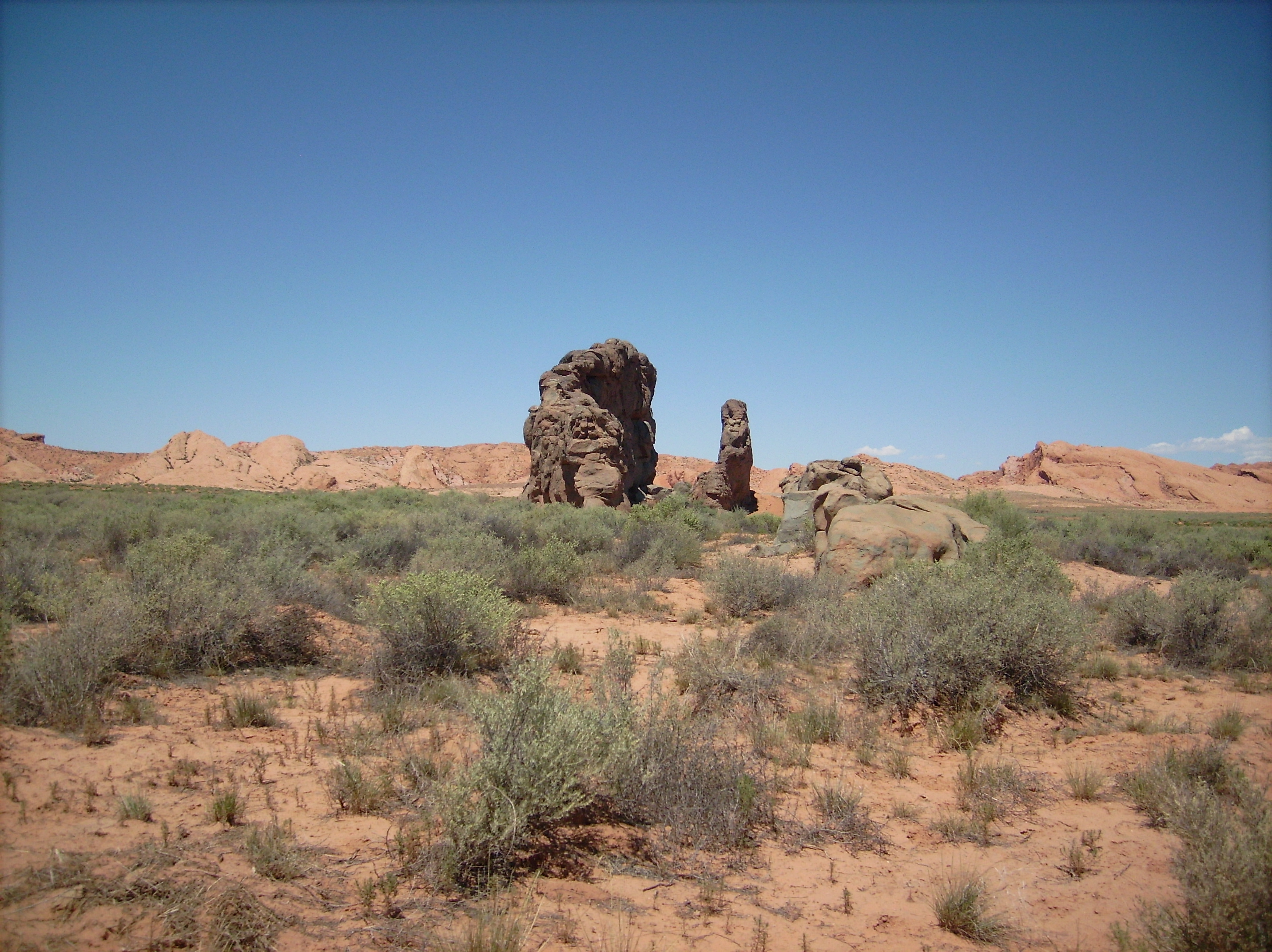
Minette dike projects from Comb Ridge in the background.

Minette dike undulates across plains south of Comb Ridge.
These dikes are made of Minette, which is very high in potassium ratio, making the rock highly alkaline, or anionic. Which means its electrons were sucked out.
They were made by shock wave currents — electro-sonic waves that scored across the land and fused the parent sands into walls of electro-chemically altered rock. They emanate from Comb Ridge on the south side of Monument Valley. And they are coherent with the triangular flat-iron buttresses of the Comb, which were formed by the same shock waves.
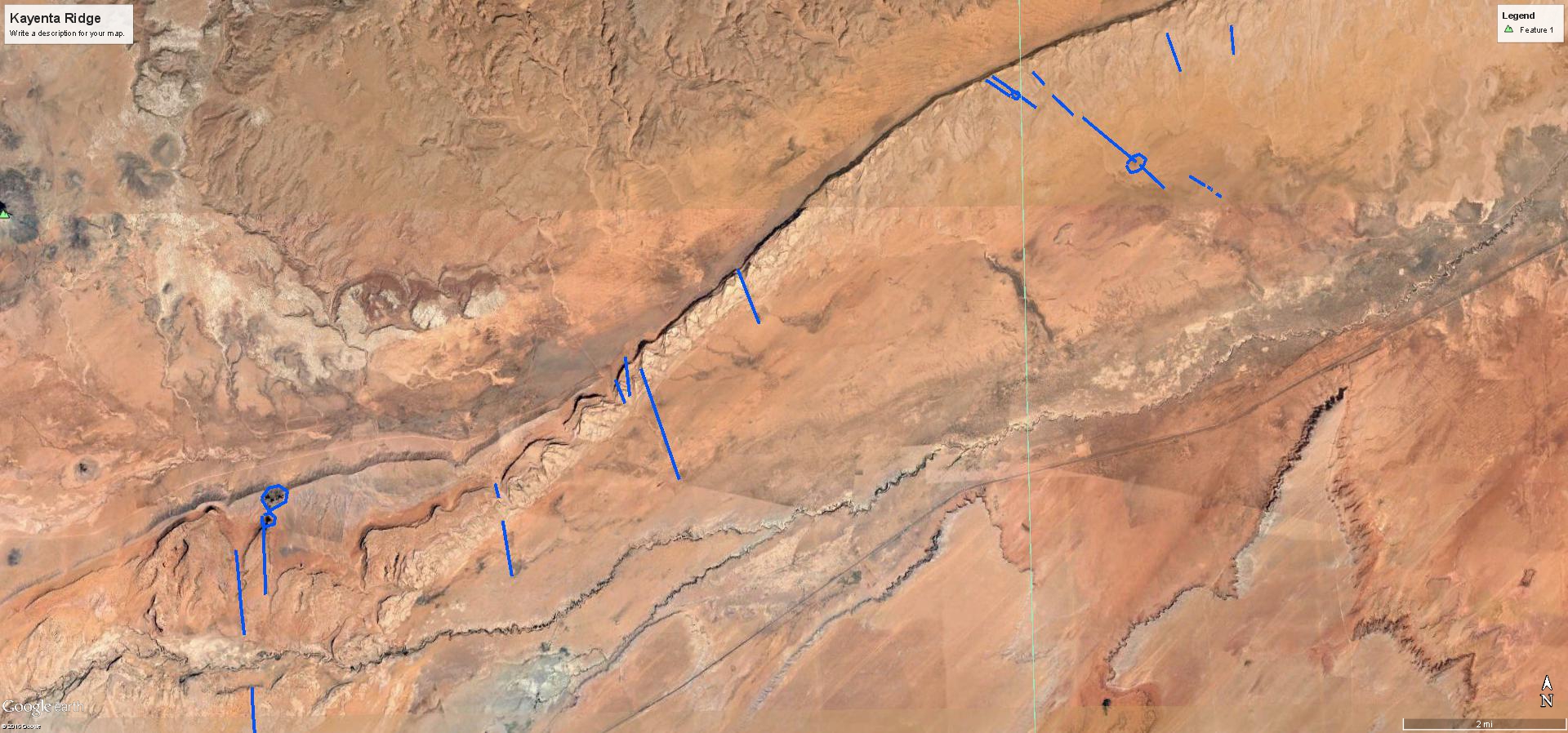
Blue lines trace Minette dikes from Comb Ridge. The black dikes align with the Mach angle of the shock wave that formed the Comb’s flat irons.
Inverse dikes are similar wall-like features that were formed by currents that depleted the rock, shielding it from sputter. These upended pancake walls at Arches National Monument, Utah were left standing as the lanes between them sputtered away, in the same fashion that preferential sputtering left mesas and pinnacles in the shadow of lightning strikes. Only for these, the diffusion of charge depletion was shaped by electro-sonic shock waves.
You can see they are layered, like the deposition layers of the mesas. Dikes don’t have deposition layers — they actually cut through deposition layers. Inverse dikes have deposition layers because they were part of the dome before it sputtered.
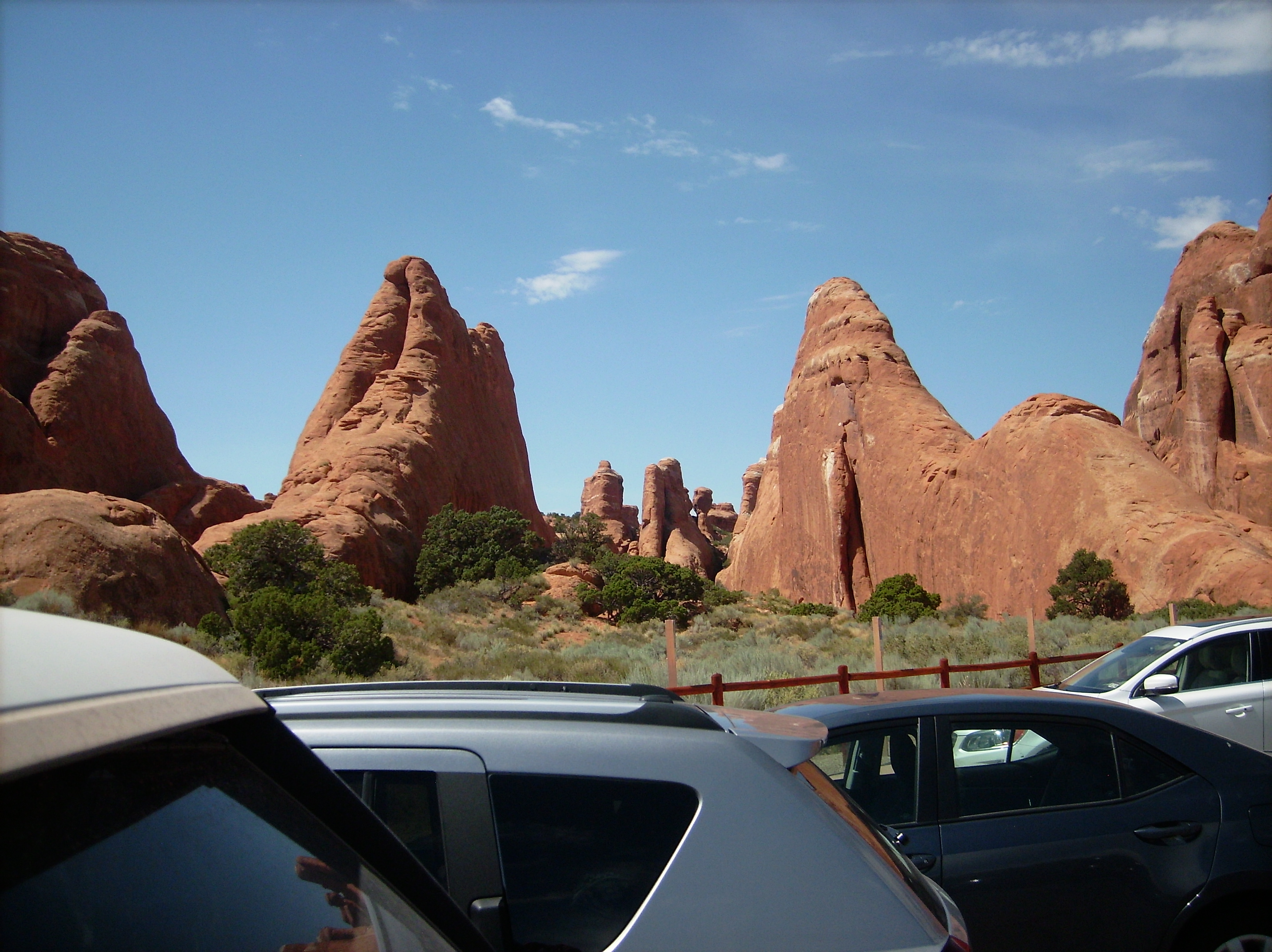
Inverse dikes of deposition layers undulate through sputtered canyons in Arches N.M.
Another phenomenon related to the whole sputtering process is gaseous explosions. It primarily occurs during dome deposition, when hot sand rains down, accelerated by the electric field under the eye-wall of the storm, to be pressed into a layer on the dome.
After deposition, but while the rock is still hot and plastic while still popping and sizzling with excess charge, volatile mixtures accumulate in pockets. The pockets migrate through weak joints, dikes, and veins in the rock, to explode near the surface, leaving holes from bubble bursts. Remember, the veins and joints are current-carrying, shock-induced features, so they dissipate heat and current as they cool.

Each hole can be associated with a fissure, or seam in the rock.

Tiny bubbles erupted along a fracture line, bottom left and center right.
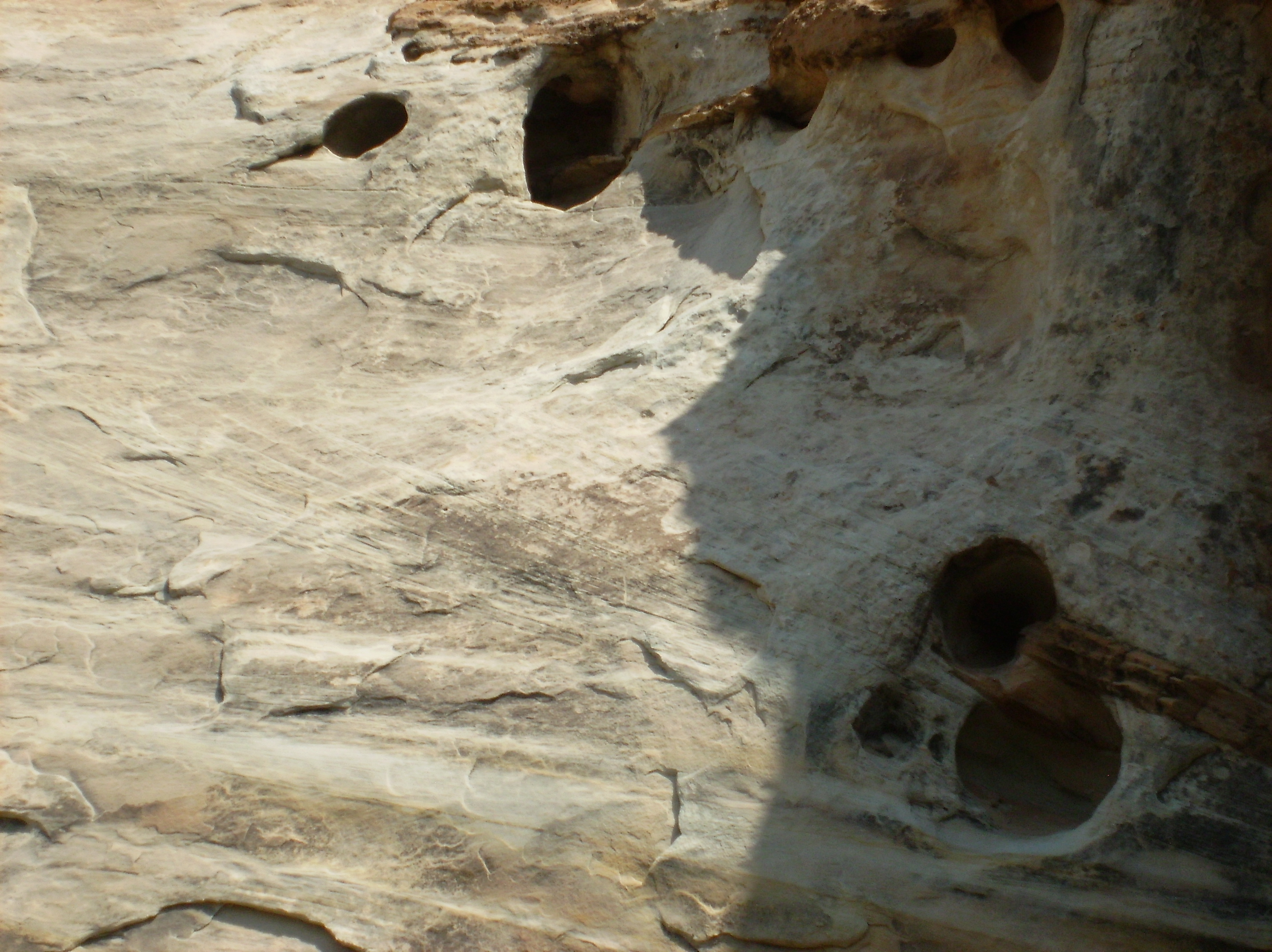
Hand-sized bubble bursts.
It’s very similar to the heat spiking bubbles that created Arches National Monument, but this occurs during dome deposition, not sputter. The gases are aided, or caused, by a residual current in the rock escaping after it deposited.
It can leave perfect bubble imprints in dense, hardened rock. Look carefully at the bubble imprint lower left of the arch. It has a “Y” shaped ridge that is the precise symmetric pattern molded into the rock that three bubbles connected would present because they have to equalize pressure across their membranes. This is not water erosion. This is bubble explosion.
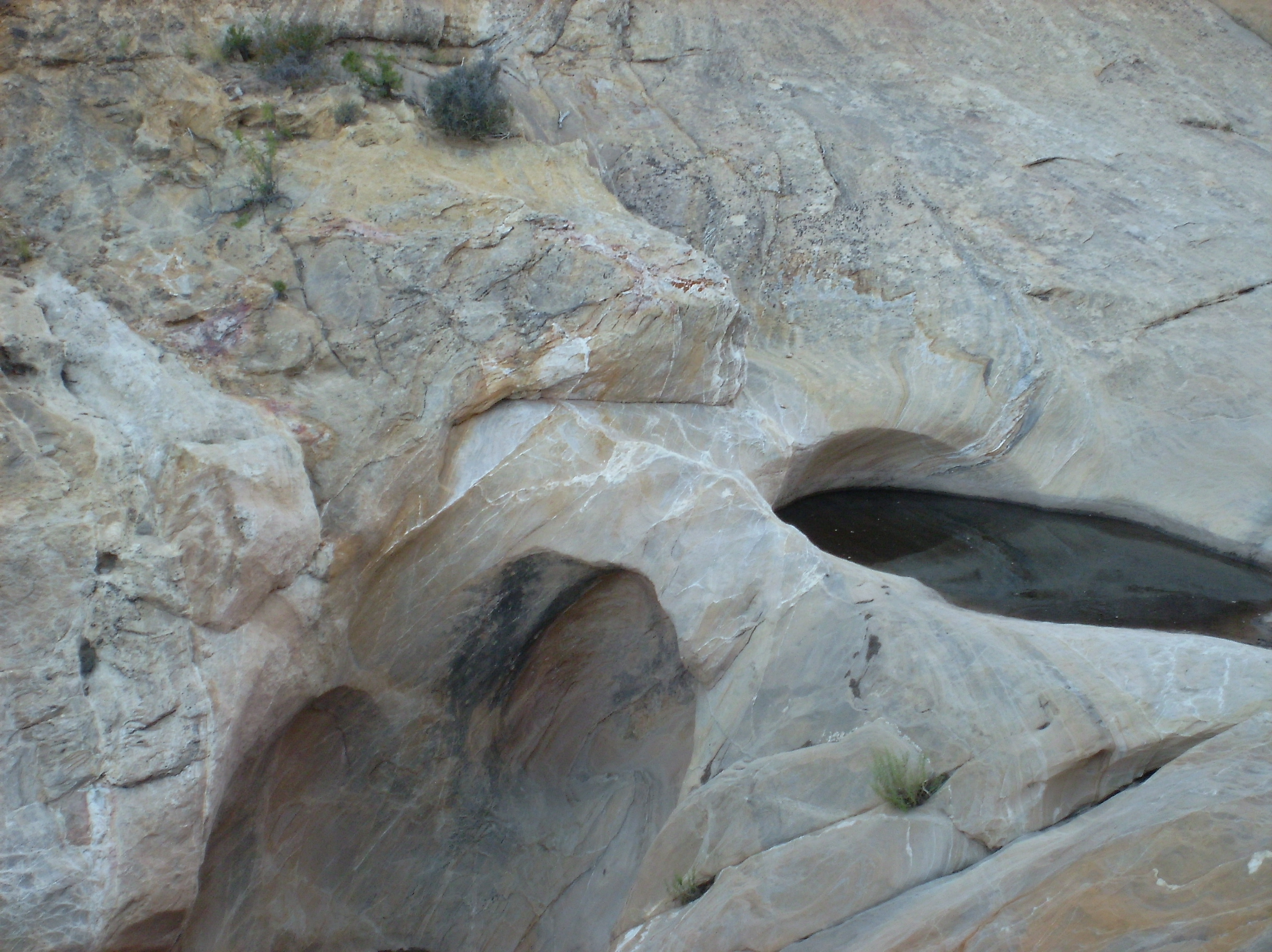
Look for the Y-shaped star in the lower left-most bubble impression.

Interesting flash-over patterns in the broken rock face near the hole causes patina of ‘desert varnish’. Looks more like drool from the lip of the bubble burst.
They also explode outward in large jets, off-gassing the hot fresh mountain as it settled and cooled, leaving ‘yawning throats’ like this.

Blehhh … Pardon me!
The light at another time of day on the same ‘yawning throat’ in the San Rafael Reef, Utah shows the band of a white crystalline dike that the gasses migrated through. The ‘tonsils’ are a blade of the rock dike.
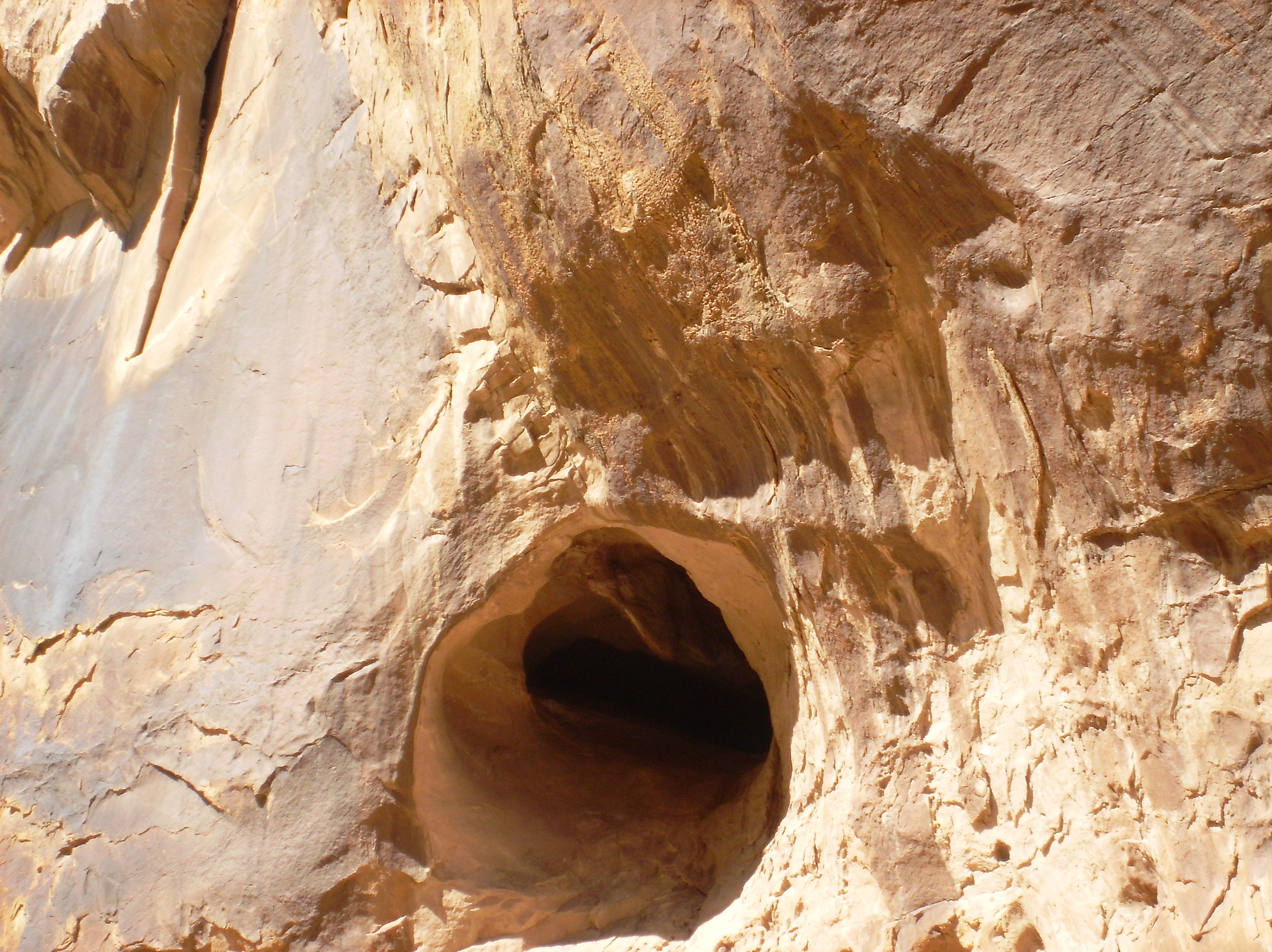
A gas jet blew out along a dike, which forms the cleft in the roof of the cavern.
This slot canyon in the San Rafael Reef was cut by a discharge of current and off-gassing. The discharge was powerful enough to cut the narrow canyon, implying it was an arc mode discharge.
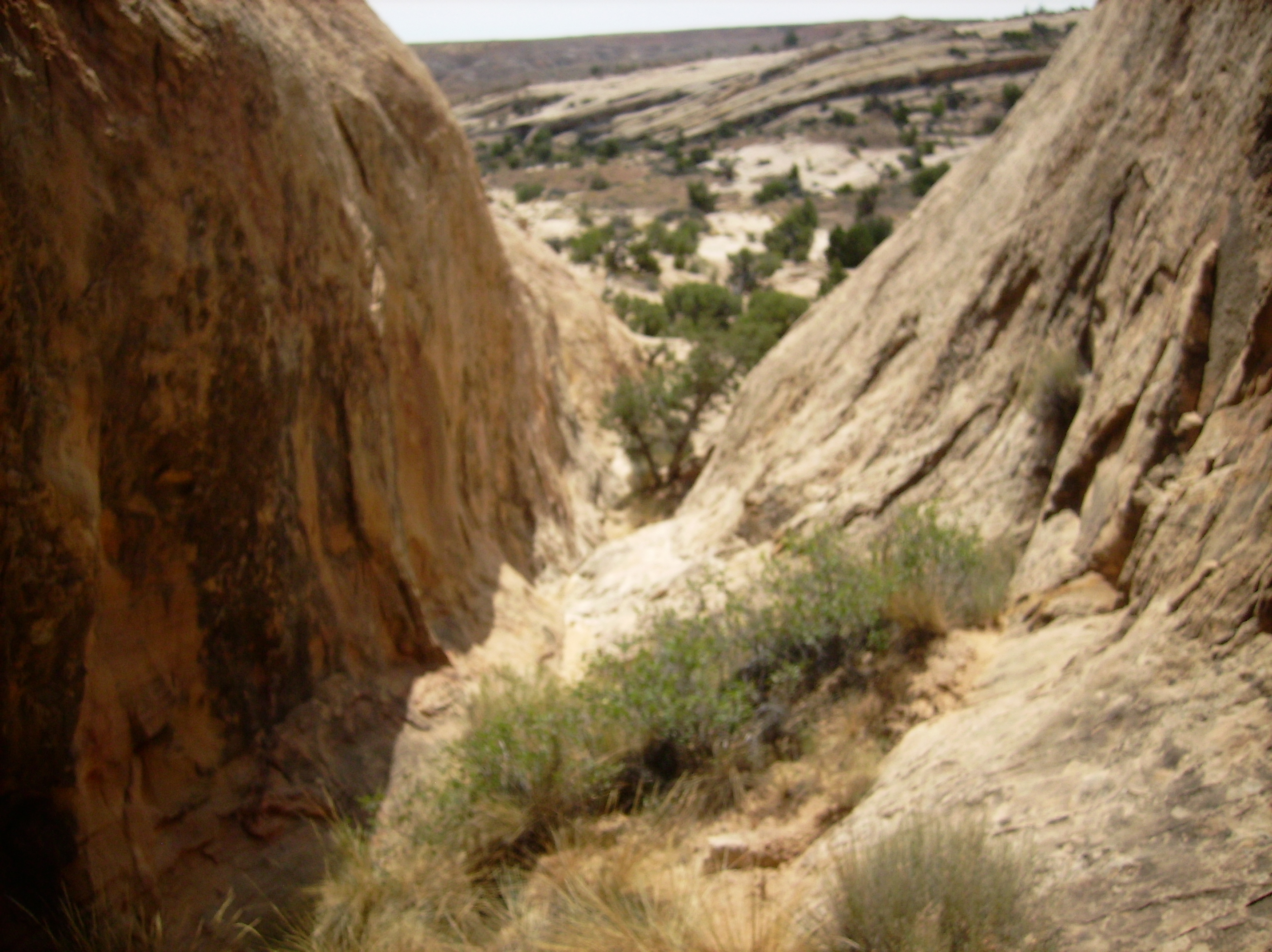
Looking out the slot canyon.
The throat of the discharge is a hole about 3-feet in diameter. It is choked with effluvia that followed the discharge and solidified as it dripped from the throat. There is a vertical dike in the rock aligned with the hole, which can be seen as the white streak in the vee-notch above the hole.
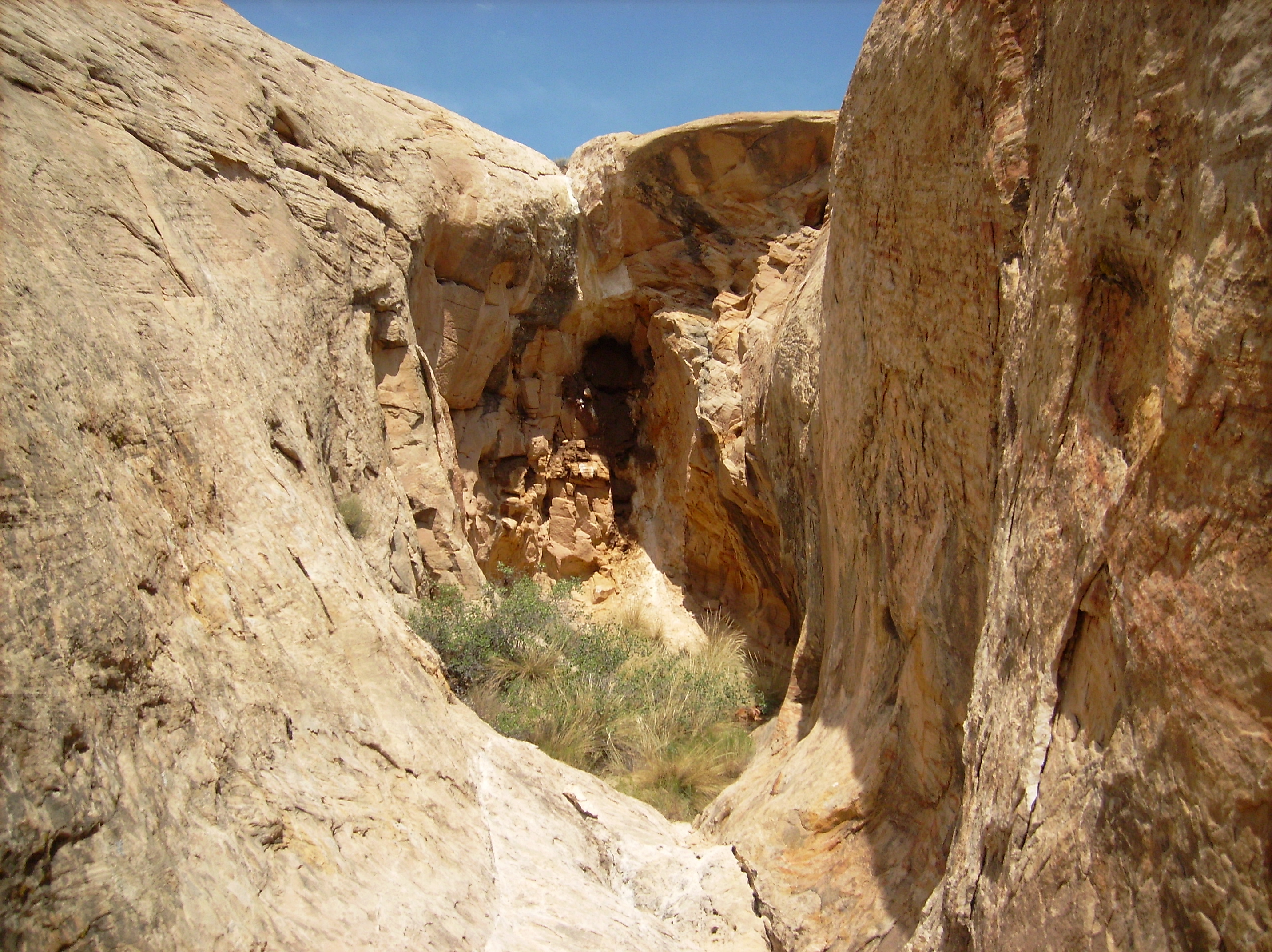
Looking into the slot canyon to the throat of discharge.
The throat is completely choked with the effluvia. The effluvia are black and textured much like Minette, found in lightning generated features elsewhere in the region.

The throat of the discharge that cut the slot canyon plugged with solidified effluvia.
A runnel of the black effluvia drips from the throat, and the walls near the throat are splattered with a white substance.

The throat is plugged with solidified effluvia.
Taste testing the white substance indicated an alkaline bitterness. Being in a National Park, samples could not be taken, so no further analysis was available.

Curious research assistant sniff tested and reported a ruff scent.
Off-gassing bubbles can be quite elaborate in volatile flows of foaming minerals. This carbonate rock fizzed like seltzer before it suddenly phase-changed to solid leaving exquisite bubble molds. Such sudden phase change implies an instantaneous electro-chemical process due to electrical discharge and recombination.
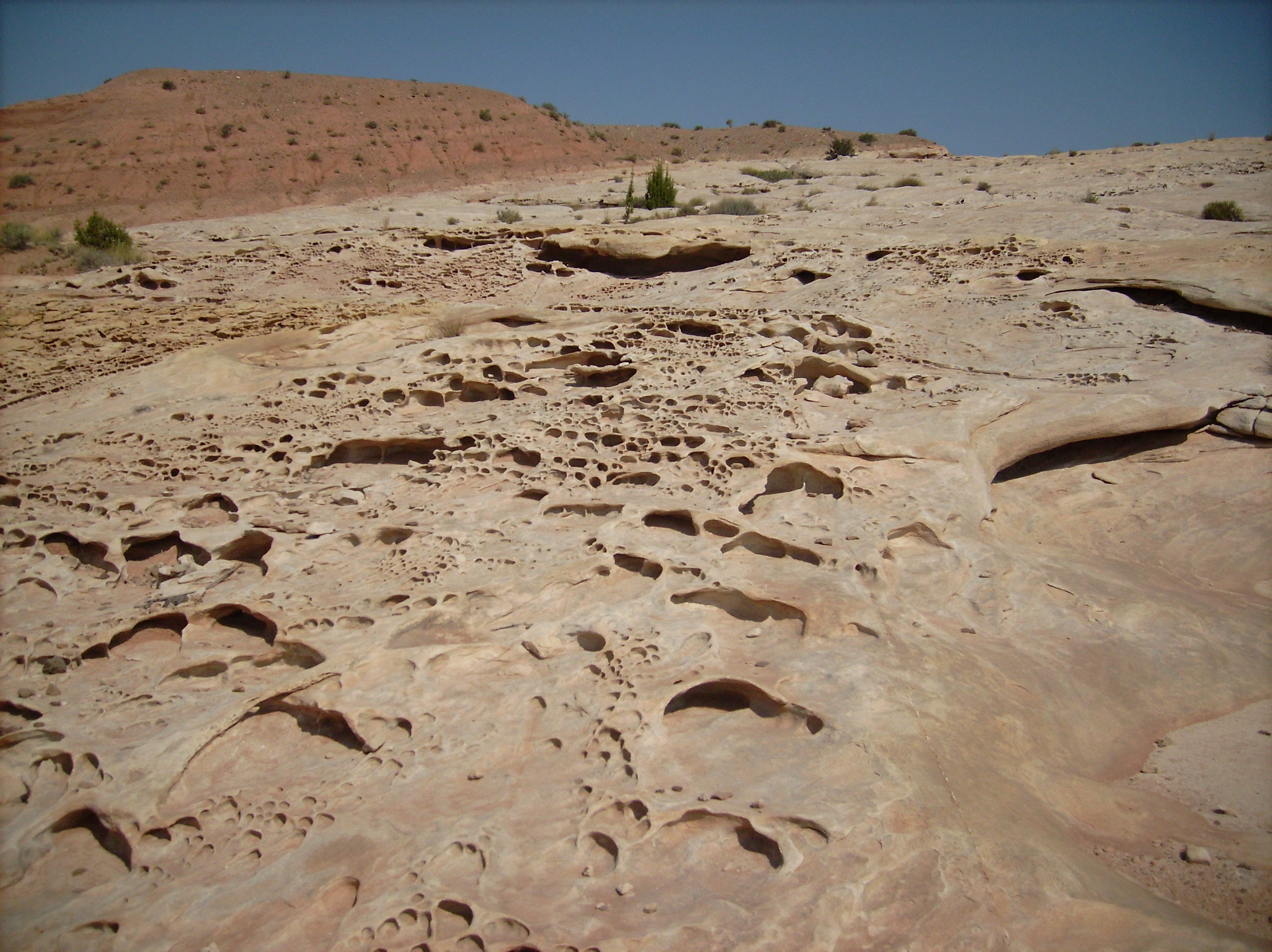
This image shows why off-gassing bubbles are part of the deposition, not sputtering. The bubbles are in the untouched surface rock above, while the scalloped break in the rock (from a cupping spall caused by sputtering) has no holes. The holes were already there when the canyon was sputtered, and are only a near-surface feature caused by off-gassing.

Bubble holes in the native rock above spalled section occurred at deposition.
While theory and conclusions presented here are the sole opinions of the author, appreciation to the researchers who spent hot, grimy hours exploring Canyonlands to obtain photos and data is due. Researchers Larry White, Bruce Leybourne, David Orr, Steve Cash, and Ginger endured extreme heat, dangerous roads, treacherous heights and fine sand in their food, examining the wonders of Canyonlands, Utah for this article.
Additional Resources by Andrew Hall:
YouTube Playlists through 4-2022:
Surface Conductive Faults | Thunderblog
Arc Blast — Part One | Thunderblog
Arc Blast — Part Two | Thunderblog
Arc Blast — Part Three | Thunderblog
The Maars of Pinacate, Part One | Thunderblog
The Maars of Pinacate, Part Two | Thunderblog
Nature’s Electrode | Thunderblog
The Summer Thermopile | Thunderblog
Tornado — The Electric Model | Thunderblog
Lightning-Scarred Earth, Part 1 | Thunderblog
Lightning-Scarred Earth, Part 2 | Thunderblog
Sputtering Canyons, Part 1 | Thunderblog
Sputtering Canyons, Part 2 | Thunderblog
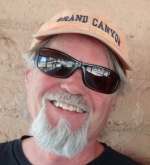 Andrew Hall is a natural philosopher, engineer, and writer. A graduate of the University of Arizona’s Aerospace and Mechanical Engineering College, he spent thirty years in the energy industry. He has designed, consulted, managed and directed the construction and operation of over two and a half gigawatts of power generation and transmission, including solar, gasification, and natural gas power systems. From his home in Arizona, he explores the mountains, canyons, volcanoes, and deserts of the American Southwest to understand and rewrite an interpretation of Earth’s form in its proper electrical context. Andrew was a speaker at the EU2016 and EU2017 conferences. He can be reached at hallad1257@gmail.com or https://andrewdhall.wordpress.com/
Andrew Hall is a natural philosopher, engineer, and writer. A graduate of the University of Arizona’s Aerospace and Mechanical Engineering College, he spent thirty years in the energy industry. He has designed, consulted, managed and directed the construction and operation of over two and a half gigawatts of power generation and transmission, including solar, gasification, and natural gas power systems. From his home in Arizona, he explores the mountains, canyons, volcanoes, and deserts of the American Southwest to understand and rewrite an interpretation of Earth’s form in its proper electrical context. Andrew was a speaker at the EU2016 and EU2017 conferences. He can be reached at hallad1257@gmail.com or https://andrewdhall.wordpress.com/
Disclosure: The proposed theories are the sole ideas of the author, as a result of observation, experience in shock and hydrodynamic effects, and deductive reasoning. The author makes no claims that this method is the only way mountains or other geological features are created.
The ideas expressed in Thunderblogs do not necessarily express the views of T-Bolts Group Inc or The Thunderbolts ProjectTM.





